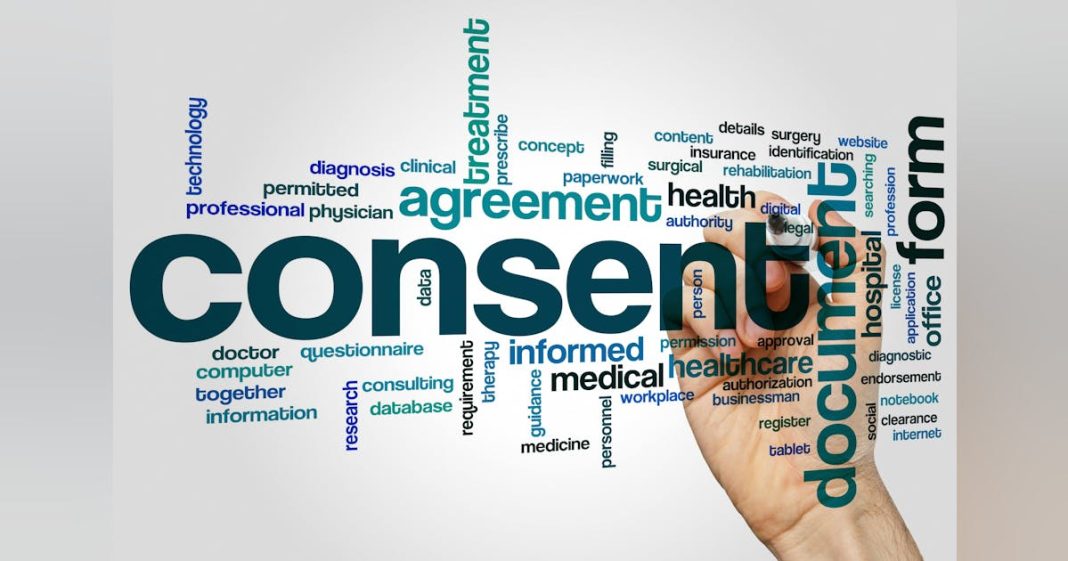In a Webinar titled “Improving Interoperability and Health Equity with Health Information Exchange Networks” hosted by MedCity News on April 16, industry experts discussed consumer consent in the digital framework of data sharing. The discussion centered on the Velatura and DocuSign pilot project, which introduced a modernized approach to patient consent capture. According to a March 24 press release, the process helps healthcare providers to efficiently route and secure patient consent forms for completion upon arrival at a care facility. Patients can then electronically sign the pre-populated forms on any device, eliminating paper forms and manual data entry.
In the Webinar introduction, moderator Aneesh Chopra, co-founder and president of CareJourney, who also served as the first CTO of the U.S., touched upon the Cures Act, which was signed into law on December 13, 2016. The Cures Act “is designed to help accelerate medical product development and bring new innovations and advances to patients who need them faster and more efficiently,” as stated by the U.S. Food and Drug Administration (FDA). Chopra mentioned that the act on paper is the solution the industry has been waiting for, but that implementation is still in the early days.
Chopra proceeded by asking the panel about their thoughts regarding social determinants of health (SDOH) as a new data class in the data-sharing framework.
Natalie Spivak, CIO of Southwest Michigan Behavioral Health, acknowledged that the population with substance abuse problems is a very difficult group for them. She mentioned that this population is transient as well as income insecure. She shared that their call center receives about 1200 to 1600 calls monthly, from which 300 electronically signed consent forms will be received.
Joseph Wager, technology manager of Mid-State Health Network, admitted that in his network, some “mom-and-pop shops” don’t have access to their own Electronic Medical Records (EMR). Required forms will be submitted electronically, but a system for electronic signing, such as DocuSign, hasn’t been set up.
Angie Bass, Velatura’s CSO, shared that Michigan has “[a] strong consent model in collecting and sharing across the room.” Bass expressed being a big believer in workflow. The more patient-friendly and transparent the process, the more efficient it will be for obtaining electronic consent forms, she said.
MJ Jackson, global head of industries with DocuSign, added that marginalized groups may be provided with disparate services such as primary care specialists, housing specialists, social workers, and case managers, which can complicate information sharing. “If you don’t have the consent from the patient…for the data to flow, even if it’s technically capable of flowing without consent, that data still legally should not flow,” Jackson explained. The goal, he said, is to remove manual processes and digitize them for a singular repository.
Ultimately, Jackson added, the data should be overlayed with analytics or artificial intelligence (AI) to extract insights. Consent forms, prior authorization forms, and claims adjustments are agreements that enable multiple parties to come together to give consent, enroll, or apply for benefits. When automating these processes, he said, service providers can spend more time coordinating care.
Wager liked the idea of a decentralized option for obtaining consent. “Right now,” he said, “it’s a very manual process.” He explained that, on average, the Medicaid population that his organization serves has twice as many chronic conditions and twice as many providers as an average individual.
Bass added that the active care relationship service (ACRS) has been alive in Michigan and other places for a long time. It’s another layer of perspective, she said, regarding where the forms are collected. “It’s another piece of intelligence around data sharing.” She added that the efficiency is in collecting an actual form through the DocuSign process. “The repository enables the storage of an asset by the provider. A copy can now be sent to the patients that signed it, which is easier than the provider having to print it.”
Chopra posed the question of the validity of the e-consent from an identity management perspective. Spivak responded by sharing that this project started as a pilot a couple of years ago. “The challenging part is that all of the different providers in the network, the hospitals, the primary care doctors, they don’t all know who has these active care relationships,” she said.
“We need the consent form process in place first,” Wager added. “That’s my primary focus for this year going into it, is making the e-consent process feasible and easy to use for the provider.”
“DocuSign has been trusted for over 20 years and leveraged in every one of the 50 states for countless use cases,” Jackson emphasized. He went on to explain that his organization learned about Velatura’s pilot some time ago and ended up partnering with them. “We can inject a step that will require ID verification,” he added, addressing Chopra’s question.
Regarding the future of this project, Wager said he would like to be able to instantly retrieve data that would benefit the individual when looking at a person’s active care relationship. “I think it’s going to be so much better and less burdensome on the individual being served and for the provider…to be able to instantly get things like the medication list that they’re currently on or what diagnoses they’re currently being treated for elsewhere.”
Indeed, Chopra said, “We’re entering a period where payers and providers are going to be in the data sharing business,” highlighting a new regulation by the Centers for Medicare and Medicaid Services (CMS), finalized in January. “Do you envision a scenario where there’s an e-consent attached to every single person who wants their data managed but available?” Chopra asked the panel.
“Absolutely,” Bass responded, “we started with…the substance use disorder population because it is the population that’s been left behind.” “If we can solve for that,” she added, “then we should be able to do it categorically across the board.”







